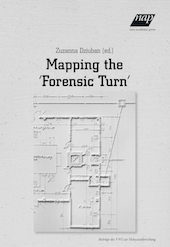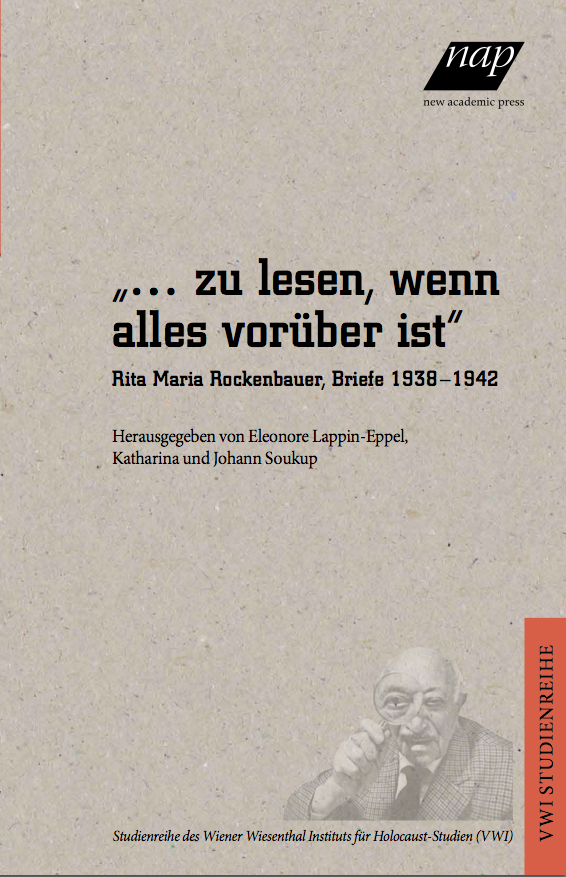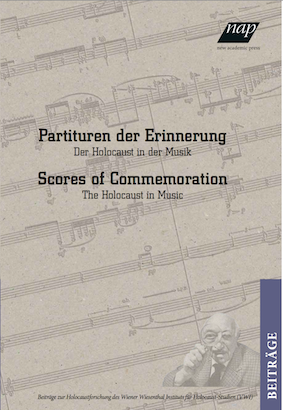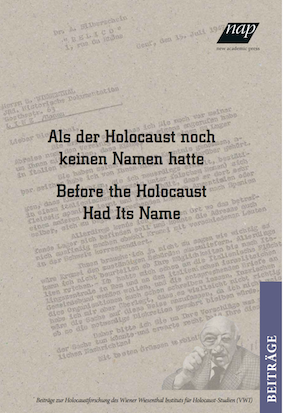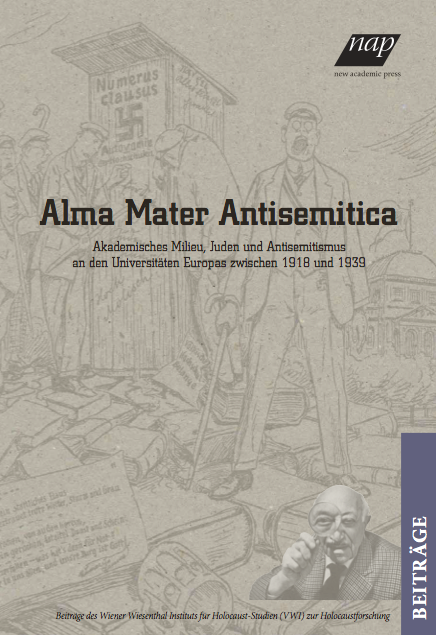 Generally, historians, social scientists and political analysts regard the First Czechoslovak Republic (1918-1938) as a haven of democracy and an island of ethnic and religious tolerance amidst authoritarian and antisemitic regimes. However, recent in-depth research shows a more differentiated image and reveals that antisemitism and authoritarian mind-sets were deeply embedded in the political culture of the country, especially outside of the Bohemian Lands. This is not only true for opposition parties of the far right, but in some respects also for those supportive of the multi-ethnic state, as well as the judiciary system, and the public prosecution. With the help of two official documents, this essay suggests that anti-democratic, antisemitic and authoritarian tendencies were already evident during the First Republic. This was apparent in the state bureaus and agencies in the independent state of Slovakia, before the dissolution of Czechoslovakia in 1938.
Generally, historians, social scientists and political analysts regard the First Czechoslovak Republic (1918-1938) as a haven of democracy and an island of ethnic and religious tolerance amidst authoritarian and antisemitic regimes. However, recent in-depth research shows a more differentiated image and reveals that antisemitism and authoritarian mind-sets were deeply embedded in the political culture of the country, especially outside of the Bohemian Lands. This is not only true for opposition parties of the far right, but in some respects also for those supportive of the multi-ethnic state, as well as the judiciary system, and the public prosecution. With the help of two official documents, this essay suggests that anti-democratic, antisemitic and authoritarian tendencies were already evident during the First Republic. This was apparent in the state bureaus and agencies in the independent state of Slovakia, before the dissolution of Czechoslovakia in 1938.
Editorial
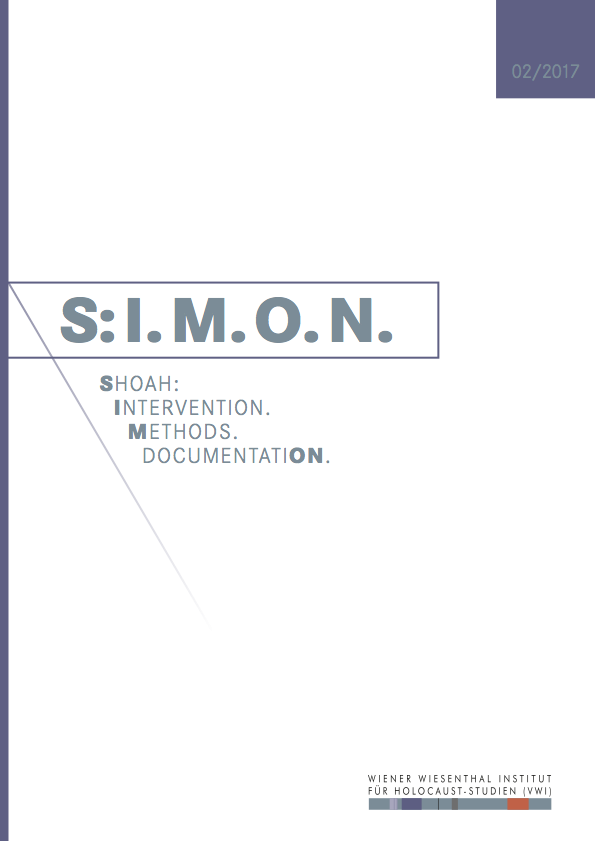 S:I.M.O.N. is an e-journal of the Vienna Wiesenthal Institute for Holocaust Studies (VWI). It appears twice a year in English and German language. S:I.M.O.N. aims at both a transnational and comparative history of the Holocaust and Jewish Studies in Central and Eastern Europe within the broader contexts of the European history of the 20th and 21st century, including its prehistory, consequences and legacies as well as the history of memory.
S:I.M.O.N. is an e-journal of the Vienna Wiesenthal Institute for Holocaust Studies (VWI). It appears twice a year in English and German language. S:I.M.O.N. aims at both a transnational and comparative history of the Holocaust and Jewish Studies in Central and Eastern Europe within the broader contexts of the European history of the 20th and 21st century, including its prehistory, consequences and legacies as well as the history of memory.
S:I.M.O.N. serves as a forum for discussion of various methodological approaches. The journal especially wishes to strengthen the exchange between researchers from different scientific communities and to integrate both the Jewish history and the history of the Holocaust into the different “national” narratives. It also lays a special emphasis on memory studies and the analysis of politics of memory. S:I.M.O.N. uses a double-blind review system, which means that both the reviewer’s and the author’s identities are concealed from each other hroughout the review process.
Shoah: The journal deals with the history of the Shoah from multidisciplinary, transnational and comparative perspectives. It seeks to integrate studies on Jews as well as on other groups of victims of the Holocaust, especially on Roma, and of so far less researched regions of (East) Central and (South) Eastern Europe.
Intervention. The journal reports on research projects and their transmission into public events. It also informs about current educational and remembrance programs.
Methods. The journal serves as a forum for the discussion of methodological approaches as, for instance, the everyday history, oral history, gender history, the history of violence, anti-Semitism and racism and the theory of memory and memory politics.
DocumentatiON. The journal contributes to critical approaches on using and interpreting archival materials in the 21st century.
Download the current issue S:I.M.O.N. 2017/2.
Articles
Christina Winkler
Der russische Blick auf die Shoah
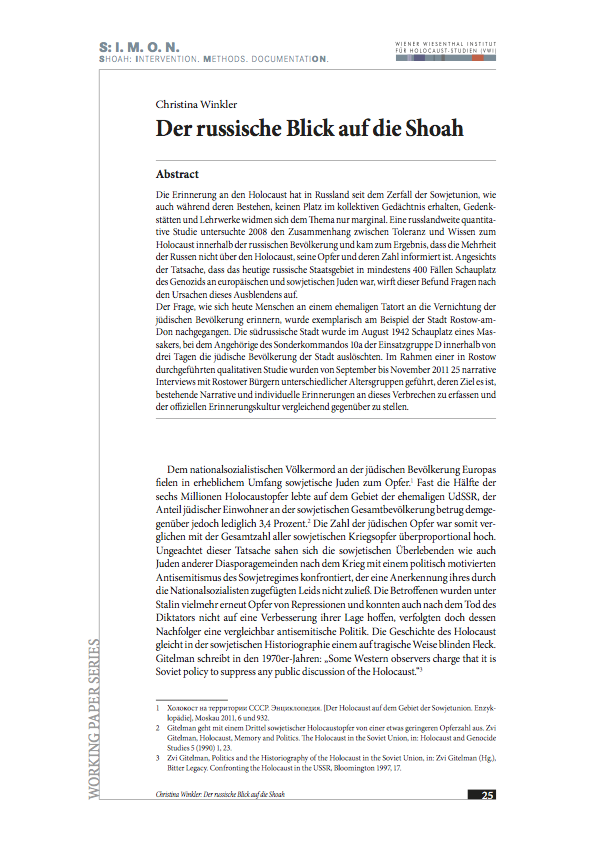 Both during the Soviet era and after its collapse, there has been no room for Holocaust remembrance in Russia's collective memory; memorials and textbooks only marginally touch on the topic. In 2008, quantitative research across Russia investigated the relationship between tolerance and Holocaust knowledge within the Russian population and concluded that the majority of Russians were not aware of the Holocaust, its victims and their numbers. Considering the fact that the current territory of Russia includes at least 400 sites of perpetration of the genocide of European and Soviet Jews, these results urge the question of the causes for this suppression.
Both during the Soviet era and after its collapse, there has been no room for Holocaust remembrance in Russia's collective memory; memorials and textbooks only marginally touch on the topic. In 2008, quantitative research across Russia investigated the relationship between tolerance and Holocaust knowledge within the Russian population and concluded that the majority of Russians were not aware of the Holocaust, its victims and their numbers. Considering the fact that the current territory of Russia includes at least 400 sites of perpetration of the genocide of European and Soviet Jews, these results urge the question of the causes for this suppression.
The city of Rostov-on-Don served as an example in order to address the question of how people now remember the former site of the extermination of the Jewish population. This southern Russian city became the site of a massacre in August 1942, when members of the special commando 10a, part of Einsatzgruppe D annihilated the Jewish population of the city within three days. In the context of qualitative research undertaken in Rostov, 25 narrative interviews were conducted with citizens of Rostov from a range of age groups between September and November 2011. It was the aim of the interviews to record the existing narrative and individual memories of this crime and to compare and contrast these with the official culture of remembrance.
SWL-Reader
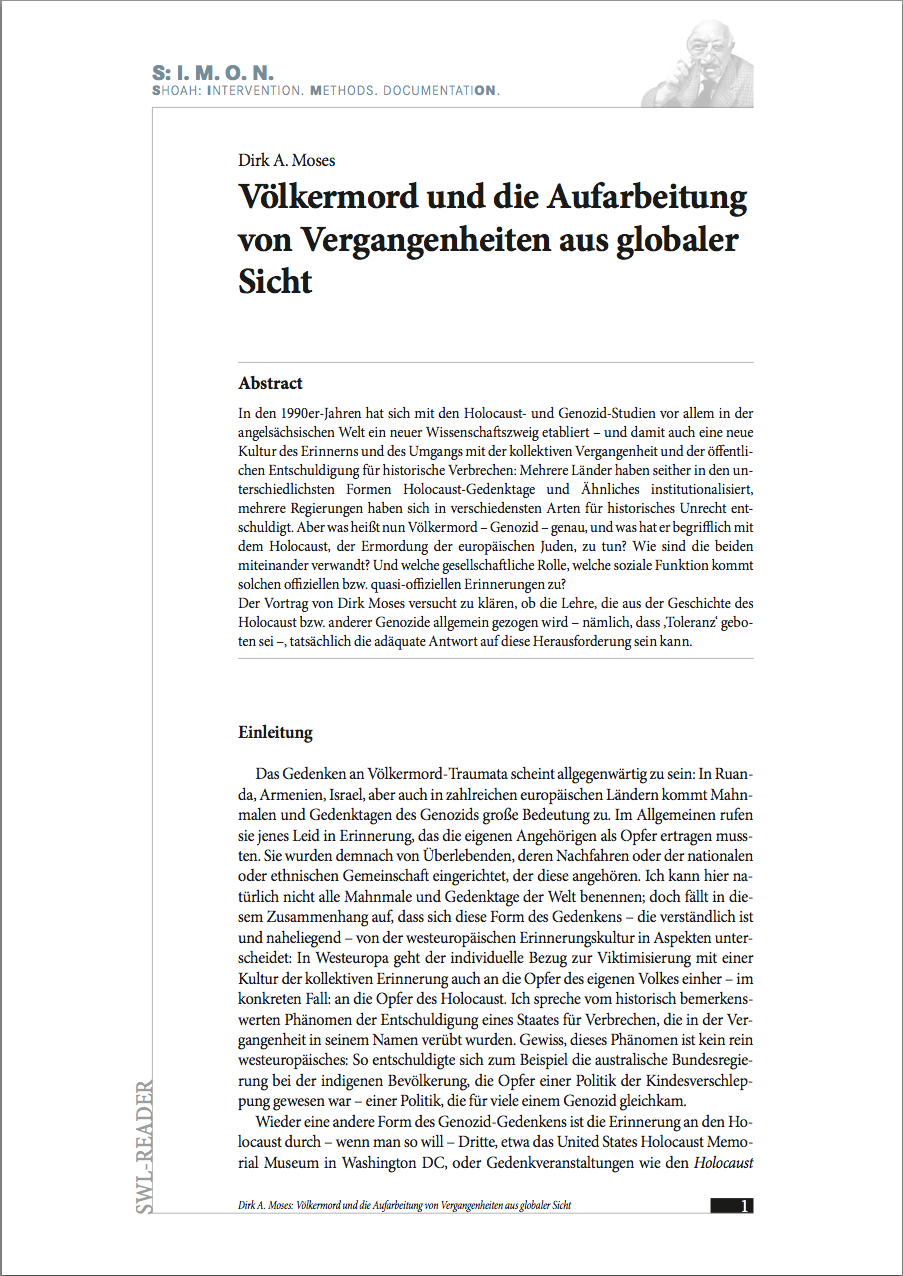 Holocaust and Genocide Studies emerged as a new discipline during the 1990s, particularly so in the Anglo-Saxon world. This development also established a new culture of remembrance and treatment of the collective past and public apologies for historical crimes. Since then, several countries have institutionalized Holocaust memorial days and similar institutions in a range of formats, several governments have apologized for historical injustices in various manners. Yet, there remains the question of a precise definition of a genocide – and in what way the term is connected to the Holocaust, the murder of the European Jews. How are these two related? What is the social function of such official or semi-official remembrances, and what is their role in society?
Holocaust and Genocide Studies emerged as a new discipline during the 1990s, particularly so in the Anglo-Saxon world. This development also established a new culture of remembrance and treatment of the collective past and public apologies for historical crimes. Since then, several countries have institutionalized Holocaust memorial days and similar institutions in a range of formats, several governments have apologized for historical injustices in various manners. Yet, there remains the question of a precise definition of a genocide – and in what way the term is connected to the Holocaust, the murder of the European Jews. How are these two related? What is the social function of such official or semi-official remembrances, and what is their role in society?
In his lecture, Dirk Moses endeavoured to clarify whether the insights gained from the history of the Holocaust and other genocides in general – namely, the imperative of 'tolerance' – really does provide an adequate answer to this challenge.
Events
Zoltán Halasi
Duschehubka
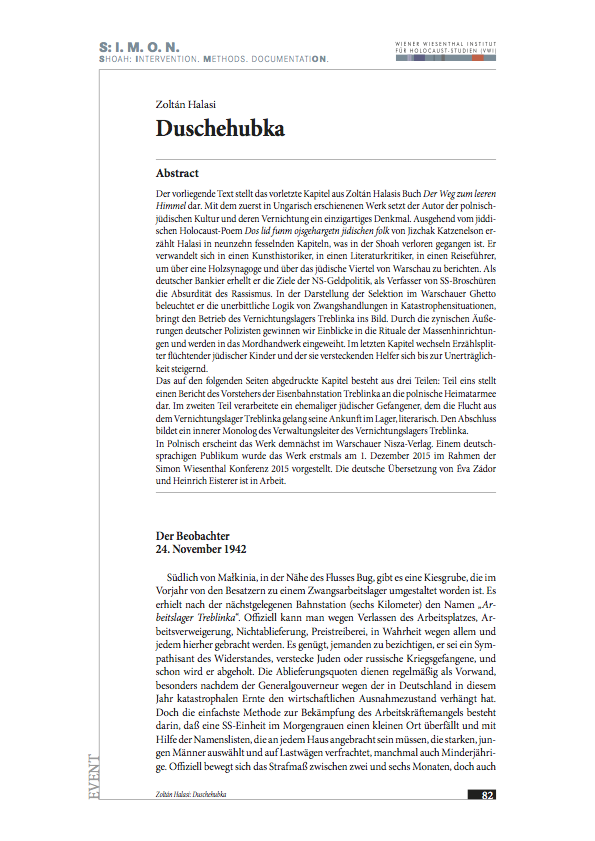 This text is the penultimate chapter of Zoltán Halasi's book Út az üres éghez (Road to an Empty Sky). With this work, which was first published in Hungarian, the author created a singular memorial to Polish-Jewish culture and its destruction. Setting out from the Yiddish Holocaust poem Dos lid funm ojsgehargetn jidischen folk by Itzhak Katzenelson, Halasi records what was lost in the Shoah in the course of nineteen compelling chapters. He takes on the grab of an art historian, a literary critic and a travel guide when he reports about a wooden synagogue and the Jewish quarter in Warsaw. In the role of a German banker, he illuminates the aims of the Nazi monetary policies, as a writer of SS brochures he highlights the absurdity of racism. Depicting a Selektion in the Warsaw ghetto, he shows the grim logic of compulsive acts in catastrophic situations, draws an image of the running of the extermination camp Treblinka. The cynical words of two German policemen provide an insight into the rituals of mass executions and introduce us to the craft of murder. The final chapter is an interplay of slithers of narrative by Jewish children on the run and by those who helped and hid them that borders on the unbearable.
This text is the penultimate chapter of Zoltán Halasi's book Út az üres éghez (Road to an Empty Sky). With this work, which was first published in Hungarian, the author created a singular memorial to Polish-Jewish culture and its destruction. Setting out from the Yiddish Holocaust poem Dos lid funm ojsgehargetn jidischen folk by Itzhak Katzenelson, Halasi records what was lost in the Shoah in the course of nineteen compelling chapters. He takes on the grab of an art historian, a literary critic and a travel guide when he reports about a wooden synagogue and the Jewish quarter in Warsaw. In the role of a German banker, he illuminates the aims of the Nazi monetary policies, as a writer of SS brochures he highlights the absurdity of racism. Depicting a Selektion in the Warsaw ghetto, he shows the grim logic of compulsive acts in catastrophic situations, draws an image of the running of the extermination camp Treblinka. The cynical words of two German policemen provide an insight into the rituals of mass executions and introduce us to the craft of murder. The final chapter is an interplay of slithers of narrative by Jewish children on the run and by those who helped and hid them that borders on the unbearable.
The chapter reproduced on the following pages has three parts: Part one is a Treblinka railway station master's report to the Polish Home Army. In the second part, a former Jewish detainee who managed to escape from the extermination camp Treblinka gives a literary treatment of his arrival at the camp. The final part consists of an inner monologue by the Treblinka extermination camp's director of administration.
The book will shortly be published in Polish at the Nisza publishing company in Warsaw. The German-speaking public was first presented with the work on December 1, 2015 at the Simon Wiesenthal Conference 2015. The German translation by Éva Zádor and Heinrich Eisterer is in progress.
Miloslav Szabó: Antijüdische Provokationen. Amtsberichte zur politischen Radikalisierung in der ČSR am Vorabend des Zweiten Weltkriegs
„... zu lesen, wenn alles vorüber ist“
Rita Maria Rockenbauer, Briefe 1938 –1942
Wien 2014
Partituren der Erinnerung.
Der Holocaust in der Musik
Scores of Commemoration.
The Holocaust in Music
Wien 2015
Before the Holocaust Had Its Name. Early Confrontations of the Nazi Mass Murder of the Jews
Wien 2016
Akademisches Milieu, Juden und Antisemitismus an den Universitäten Europas zwischen 1918 und 1939
Academic Milieu, Jews and Antisemitism at European Universities between 1918 and 1939
Wien 2016


